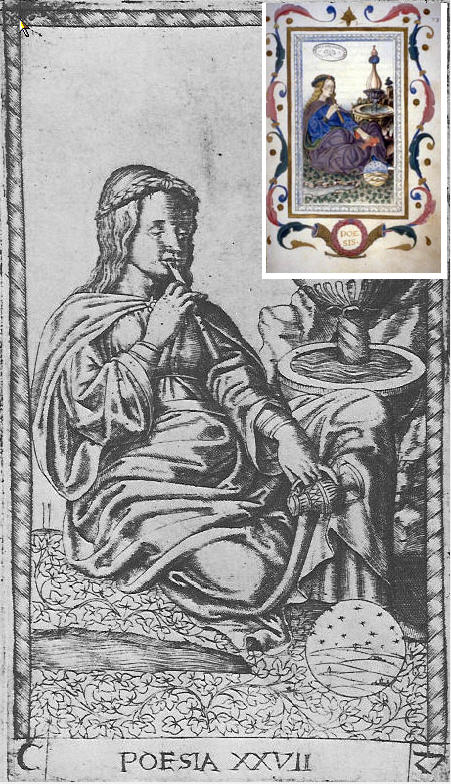Stefan
Hi everyone! I'm reposting this from the TdM/historical decks page, which may not have been the right forum for such a thread:
I have recently become enamored of the so-called "Mantegna Tarot" and have been steadily devouring information on this set of prints. One of the readily available bits of information is the common knowledge that Andrea Mantegna was actually not the artist of the prints, but likely one of his pupils.
Does anyone know of the source for this claim? In my searches, I have found nothing beyond the referenced claims of art historians. Generally, when experts make a claim like this, they catalogue a preponderance of evidence; I have yet to find this or even a reference to that end.
On the other hand, I did find Rafal Prinke's article that refers to Vasari's biographical note that Mantegna made the finest set of 'Trionfi' seen in a long time, which may refer to the prints. The prints are dated to circa 1460, when Mantegna would have been in his late 20s-early 30s: young enough to be making trionfi cards for the general public, and old enough to possibly have some students doing this kind of work.
Certainly, the images reflect the characteristics of Mantegna's style: low horizon, promoting a monumental feel of the subject, which is rendered in the statuary style in which he excelled. It almost seems that Mantegna could certainly be a likely candidate as the creator of the prints, in spite of the 'common knowledge.'
Does anyone have any thoughts and/or leads on this topic?
Stefan
I have recently become enamored of the so-called "Mantegna Tarot" and have been steadily devouring information on this set of prints. One of the readily available bits of information is the common knowledge that Andrea Mantegna was actually not the artist of the prints, but likely one of his pupils.
Does anyone know of the source for this claim? In my searches, I have found nothing beyond the referenced claims of art historians. Generally, when experts make a claim like this, they catalogue a preponderance of evidence; I have yet to find this or even a reference to that end.
On the other hand, I did find Rafal Prinke's article that refers to Vasari's biographical note that Mantegna made the finest set of 'Trionfi' seen in a long time, which may refer to the prints. The prints are dated to circa 1460, when Mantegna would have been in his late 20s-early 30s: young enough to be making trionfi cards for the general public, and old enough to possibly have some students doing this kind of work.
Certainly, the images reflect the characteristics of Mantegna's style: low horizon, promoting a monumental feel of the subject, which is rendered in the statuary style in which he excelled. It almost seems that Mantegna could certainly be a likely candidate as the creator of the prints, in spite of the 'common knowledge.'
Does anyone have any thoughts and/or leads on this topic?
Stefan



